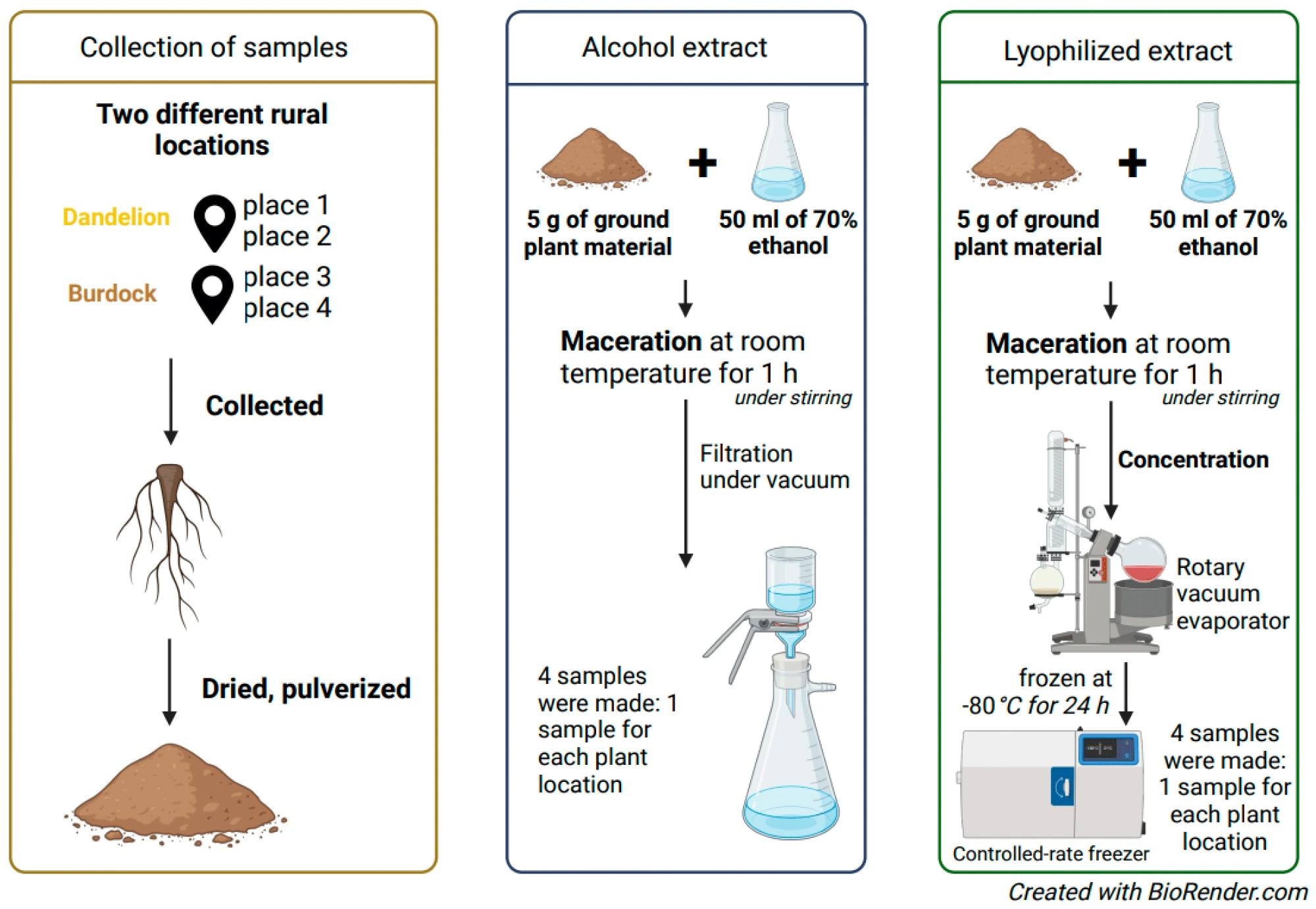Type 2 diabetes mellitus (T2DM) accounts for a majority of diabetes cases globally and is associated with various risk factors, including genetic predisposition, poor diet, and lack of physical activity, leading to insulin resistance and hyperglycemia-associated complications. Given the drawbacks and expenses of conventional hypoglycemic drugs, there is a growing interest in herbal medicine for diabetes management. Preclinical studies highlight the potential of edible plants for blood sugar control and offer promising alternatives with apparent efficacy and low toxicity.
Dandelion and burdock, traditional medicinal plants belonging to the Asteraceae family, are rich in diverse phytochemicals with potential health benefits. They contain phenolic acids, coumarins, and polysaccharides, exhibiting various biological activities, suggesting their potential role in managing complex conditions like T2DM. The present study aimed to investigate the potential antidiabetic properties of chemical compounds in dandelion and burdock roots by assessing their effects on blood sugar levels and antioxidant capabilities.
About the study
Dandelion and burdock roots were collected from two distinct rural regions in Latvia and processed according to standardized methods. While dandelion roots were sourced from "Vecpiebalga" and "Kaļķis," burdock roots were collected near "Viļani" and "Būdiņas." The roots were washed, dried, and ground into a powder for extraction. Ethyl alcohol extracts (AE) and lyophilizate extracts (LE) were prepared from the powdered roots, and both extraction methods were analyzed comparatively. Analysis of the extracts included determination of inulin content, TPC, tannin level, and TP.
 Preparation of ethyl alcohol and lyophilizate extracts.
Preparation of ethyl alcohol and lyophilizate extracts.
Additionally, antioxidant activities were assessed using the DPPH (short for 2,2-diphenyl-1-picrylhydrazyl) assay, and hypoglycemic properties were assessed based on α-amylase activity. Trolox was used as a standard solution for constructing the standard curve in the antioxidant activity analysis. Half maximal inhibitory concentration (IC50) was determined for Trolox and compared with that of dandelion and burdock. Similarly, in the hypoglycemic activity analysis, acarbose was used as the standard solution.
Liquid chromatography-mass spectrometry (LC-MS) was employed for qualitative analysis of the chemical components. Statistical analysis involved means and standard errors, analysis of variance, and the Mann–Whitney U test.
Results and discussion
The results of specific color-change-based chemical tests revealed the presence of inulin and the absence of starch in burdock and dandelion roots. Significant differences were observed in TPC between alcohol-based and lyophilizate extraction methods, with burdock showing higher TPC, particularly in LE. Dandelion roots showed negligible tannin content, while burdock roots exhibited low but detectable levels, with LE showing slightly higher values. However, no significant difference was found in terms of TPC and tannin obtained from samples of the two different Latvian rural regions in the study.
Further, dandelion root extract showed higher values of TP compared to burdock root extract. No statistically significant differences were found in the TP between the two plants. Comparatively, LE exhibited significantly higher antioxidant activity compared to AE. Burdock LE outperformed Trolox, while dandelion AE showed the least favorable outcome.
None of the plant extracts matched the IC50 of acarbose, with LE of burdock showing the most favorable outcomes and the AE of dandelion demonstrating the least favorable results. LE consistently showed significantly higher values compared to AE within the same plant samples.
Diverse chemical compounds were found in root extracts, including amino acids, phenolic acids, and alkaloids, among others. Specific compounds like chlorogenic acid, phenylalanine, and valine were found in all the extracts, while others like caffeic acid and oleanolic acid were exclusive to burdock, and salicylic acid glucoside and protocatechuic acid were unique to dandelion. Burdock showed a wider array of unique compounds than dandelion, indicating its richer chemical profile.
In the future, exploring additional compounds present in the roots and replicating tests with various solvents could provide further insights. Animal and human studies would be crucial to confirm these findings and explore the potential clinical applications of these compounds.
Conclusion
In conclusion, the present study found burdock root to be better than dandelion regarding its chemical composition and potential therapeutic activity. However, more research is needed to confirm the effectiveness of the two plants individually and in combination with other drugs for managing diabetes and other chronic ailments.
Journal reference:
- Antidiabetic Properties of the Root Extracts of Dandelion (Taraxacum officinale) and Burdock (Arctium lappa). Zolotova D. et al., Plants, 13(7):1021 (2024), DOI: 10.3390/plants13071021, https://www.mdpi.com/2223-7747/13/7/1021